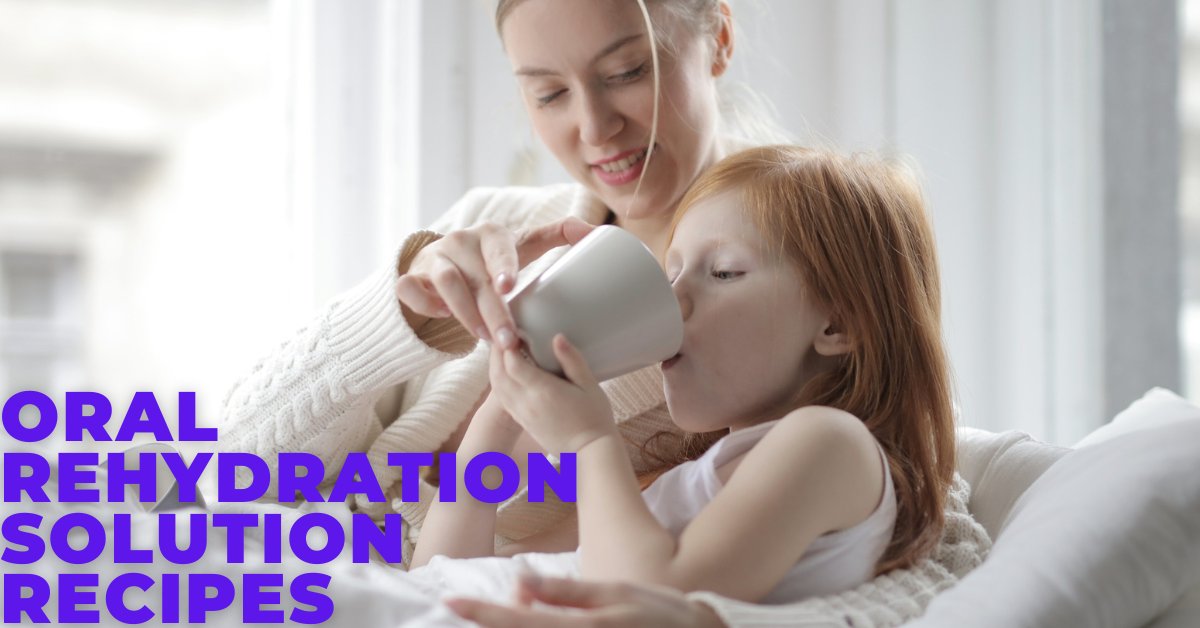WHAT IS ORAL REHYDRATION THERAPY OR SOLUTION AND HOW DOES IT WORK?
High fever in children or adults can result in dehydration or loss of fluid, in such a condition, the body needs immediate rehydration, failure to do so might result in more serious health conditions or even death. In this article, we will be looking at various recipes for oral rehydration solutions that can be prepared with ease at home.
WHAT IS AN ORAL REHYDRATION SOLUTION?
ORAL REHYDRATION THERAPY (ORT) is a type of fluid replacement used to prevent and treat dehydration due to diarrhea. It involves drinking water with modest amounts of sugar and salts, specifically sodium and potassium.
Why Oral Rehydration Therapy
Rehydration drink provides potassium, glucose, sodium and balances the body’s electrolytes. It is life-saving and should be given immediately at the very sign of diarrhea.
Any of the rehydration drinks that the ingredients are handy can be prepared.
Symptoms Of Dehydration
Signs of mild or moderate dehydration include:
- Thirst
- Dry or sticky mouth
- Not peeing very much
- Dark yellow pee
- Dry, cool skin
- Headache
- Muscle cramps
Signs of severe dehydration include:
- Not peeing or having very dark yellow pee
- Very dry skin
- Feeling dizzy
- Rapid heartbeat
- Rapid breathing
- Sunken eyes
- Sleepiness, lack of energy, confusion, or irritability
- Fainting
Symptoms of dehydration for babies and young children can be different than for adults:
- Dry mouth and tongue
- No tears when crying
- Dry diapers for 3 hours
- Sunken eyes, cheeks, soft spot on the top of the skull
- Sleepiness, lack of energy, or irritability
FIRST RECIPES FOR ORAL REHYDRATION SOLUTION
- 1 Litre/ 1¾ pints of boiled then cooled water
- 2 level tablespoon of sugar or honey
- ¼ teaspoon of baking soda (bicarbonate of soda. If this ingredient is not available then add another ½ teaspoon of salt)
- ½ cup of orange juice for taste. If available.
HOW MUCH ORAL REHYDRATION SOLUTION SHOULD BE GIVEN
- Sip the mixture every 5 minutes day and night until urination normalizes.
- About 1 Litre /1¾ pints a day should be used for a small child
- 1 glass for each watery stool produced and 3 Litres/ 5¼ pints a day for adults.
SECOND RECIPE FOR ORAL REHYDRATION SOLUTION
- 1 Litre of clean water
- ½ level teaspoon salt
- 8 level teaspoon sugar
- ½ cup of coconut water or juice from 2 oranges or a mashed raped banana.
THIRD RECIPE FOR ORAL REHYDRATION SOLUTION
- 1 Litre clean water
- ½ level teaspoon salt
- 8 heaping teaspoon powdered cereal
- Boil for 5 to 7 minutes to form a gruel
- Add ½ cup coconut water or juice from 2 oranges, or 1 mashed ripe banana.
Who discovered Oral Rehydration Therapy
Prior to the development of oral rehydration treatment (ORT), intravenous fluid therapy was the backbone of fluid therapy for diarrheal dehydration. However, the following early observations formed the scientific basis for the discovery of ORT: a group of physiologists discovered that glucose increases sodium and water absorption across the intestinal brush-border membrane of experimental animals and that there are no morphological changes in the gut epithelium of cholera patients. Captain Phillips of the United States Army was the first to effectively administer oral glucose saline to two cholera victims in 1964. Following that, experts at the Cholera Research Laboratory in Dhaka and the Infectious Diseases Hospital in Calcutta helped develop current oral rehydration salt (ORS) solution.
What is Oral Rehydration Therapy
ORAL REHYDRATION THERAPY (ORT) is a type of fluid replacement used to prevent and treat dehydration due to diarrhea. It involves drinking water with modest amounts of sugar and salts, specifically sodium and potassium.
How to tell that Oral Rehydration Therapy has been effective
People who are vomiting should be given small, regular doses of ORS solution until their dehydration is addressed. When the nausea subsides, they can continue eating normal meals. Vomiting does not exclude oral rehydration. Rehydration will be achieved as long as more fluid enters than escapes. Dehydration will persist only when the volume of fluid and electrolyte loss in vomit and stool exceeds what is taken in. When vomiting occurs, rest the stomach for five minutes before administering modest quantities of ORS solution.
Begin with a teaspoon every five minutes for young children and a tablespoon every five minutes for older children and adults. If output surpasses intake or indications of moderate to severe dehydration appear, seek medical attention.










